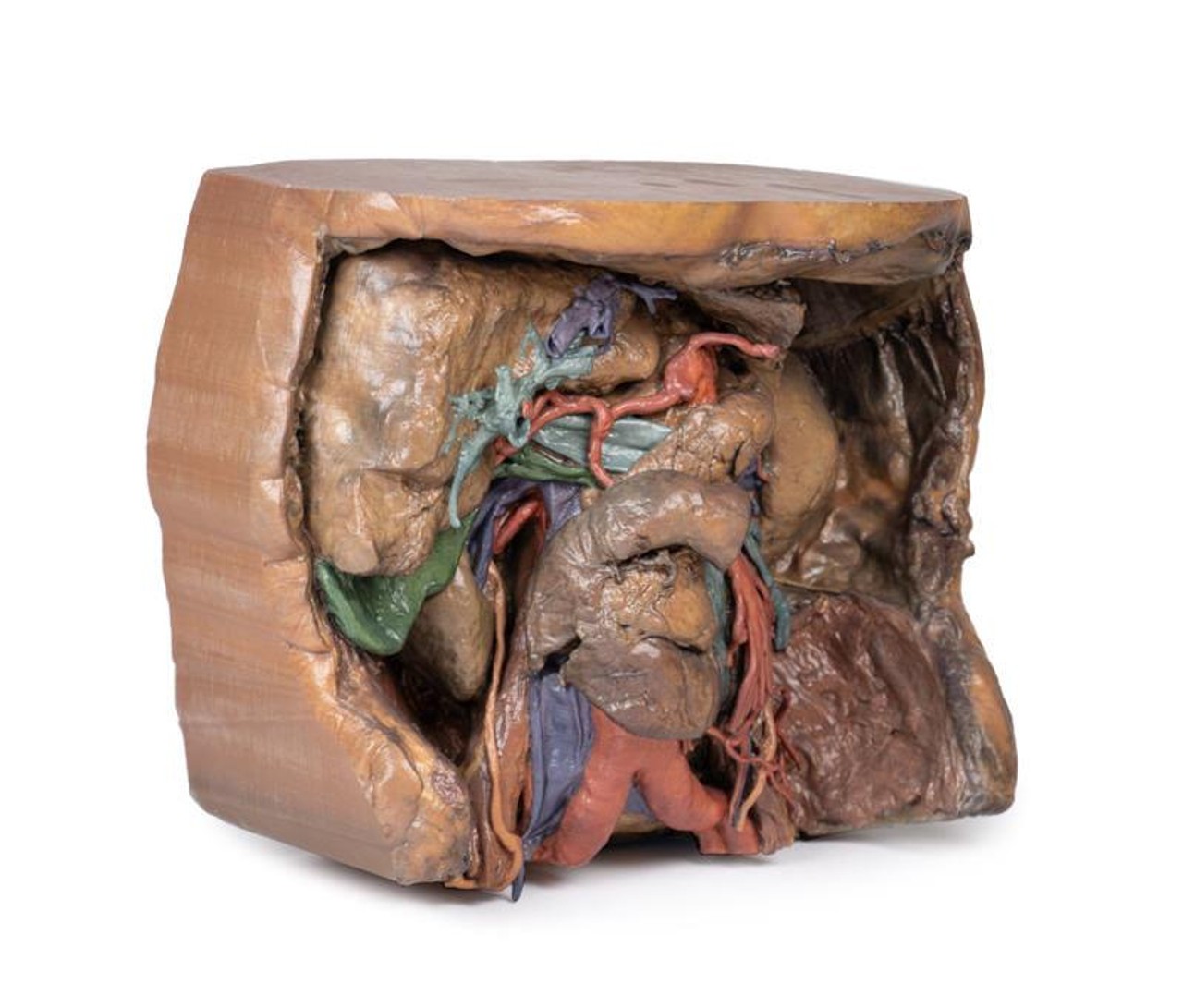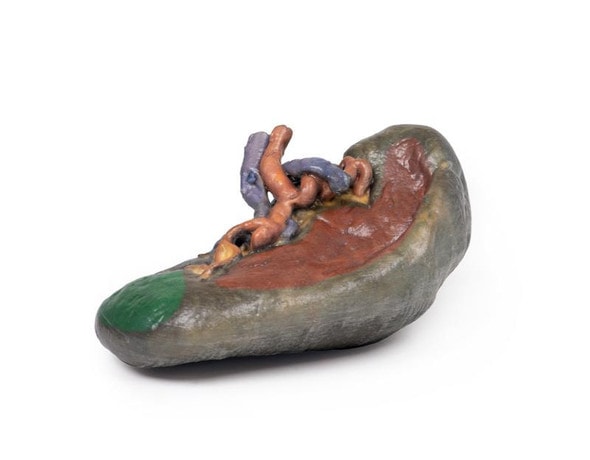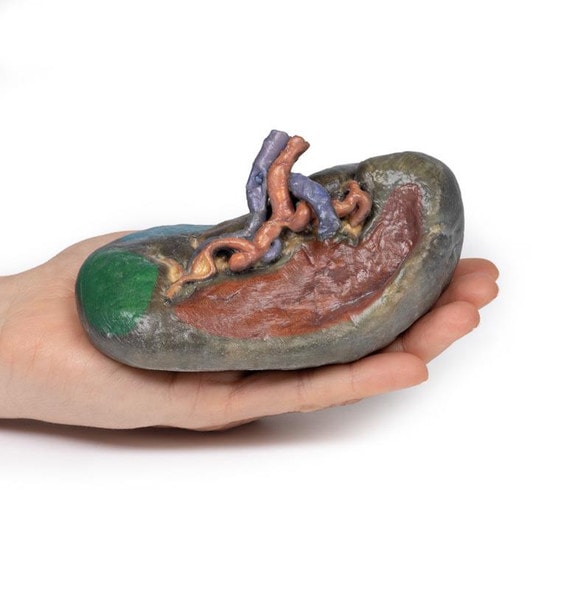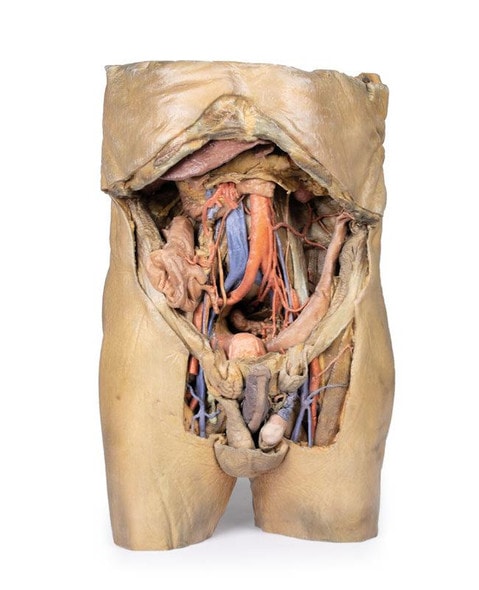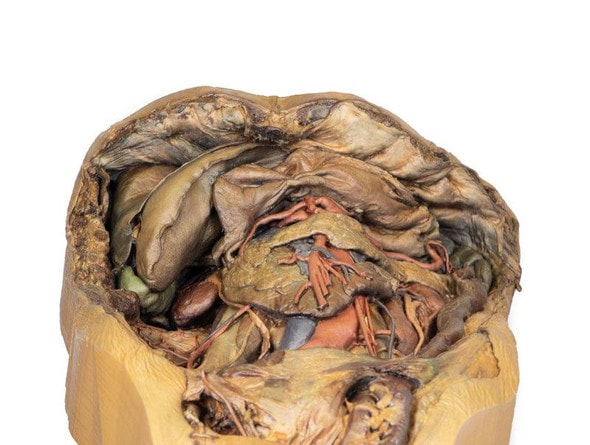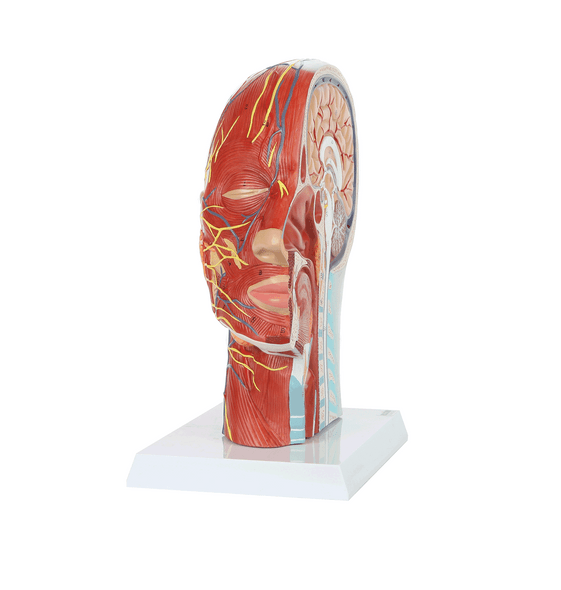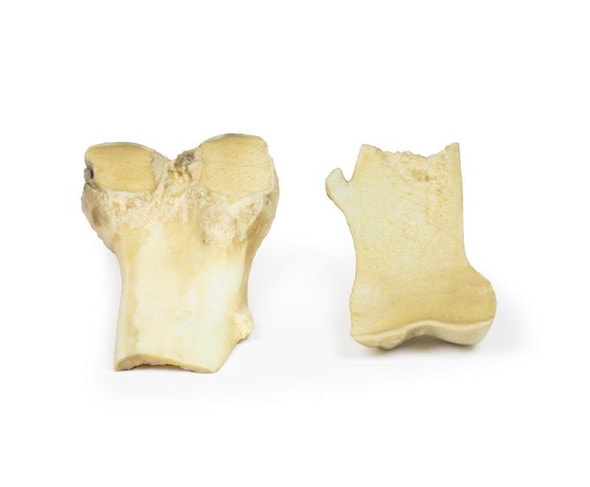Description
Coeliac Trunk
Supplying the embryological foregut, the celiac trunk arises from T12 spinal level. Branches that can be observed in this specimen include the Left gastric artery arising from the left portion of the celiac trunk; remains of the splenic artery arising from the celiac trunk and visible passing to the left hypochondrium; the Common hepatic artery, located to the right of the celiac trunk and giving off key branches; the Gastroduodenal artery, branching inferior to into the right gastric artery, and provide an anastomosis to the superior mesentery artery via the superior pancreaticoduodenal and the Proper hepatic artery, beginning after the gastroduodenal artery, branching to form the Left hepatic artery, the first branch of the proper hepatic artery, Right hepatic artery, located inferiorly, eventually giving rise to the Cystic artery, connecting to the gallbladder.
Superior Mesenteric Artery and Inferior Mesenteric Artery
Supplying the midgut and hindgut respectively, the superior mesenteric and inferior mesenteric artery arise at the L1 and L3 vertebral levels, respectively.
While both have key branches, this specimen does not preserve them in their entirety. The Superior mesenteric artery can be seen in the model exiting below the pancreas, dividing out into many branches and the Inferior mesenteric artery can be observed descending on the left of the abdominal aorta. The left colic artery, moving laterally, can be seen leaving the IMA to give rise to the marginal arteries that supply to the colon.
Venous System of the Abdomen
The superior mesenteric vein can be seen posterior to the superior mesenteric artery, notably less tubular than its arterial counterpart.
In the specimen, the left anatomical lobe of the liver has been removed, exposing portal vein branches. These will supply nutrients from the gastrointestinal system to the hepatocytes which will then connect back to the venous system through the hepatic veins. This will then meet the Inferior Vena Cava.
Hilum of the Kidney
The right kidney shows typical anatomy, as opposed to the left kidney which shows anatomical variation. Seen at the right kidney are the Right renal vein, most superior, merging directly into the IVC, the Right renal artery, most inferior, passing deep to the IVC from its origin from the abdominal aorta and the Right ureter, coursing superficial to the right renal artery to eventually travel inferiorly. The left kidney presents unique variation at the hilum with key structures as follows. The Left renal vein, most inferior (as opposed to the usual superior) and is highly subdivided. The Left renal artery, most superior (as opposed to the usual inferior) and the Left ureter, can be seen descending from the hilum and medial to the kidney.
Muscles, Nerves and Other Vasculature
The psoas major and iliacus muscle can be seen on both sides of the specimen and surrounding them, key branches of the lumbar plexus can be seen, particularly on the left side. The Iliohypogastric nerve, continuing laterally as the most superior of the nerves present and the Ilioinguinal nerve, inferior to the iliohypogastric, directed towards the inguinal canal. The Femoral nerve, originating deep to and entering view lateral to psoas major and the Genitofemoral nerve, coursing superficial to psoas major, dividing into the genital and femoral branches of innervation.
Medial to the psoas major, the left testicular artery and left testicular vein can be seen (as this is a male specimen). While the artery will receive blood directly from the aorta, the left testicular vein will drain to the left renal vein. The right sided testicular vasculature can also be observed however the right testicular vein drains directly into the IVC. The branch of the iliolumbar artery that anastomoses with the iliac circumflex artery can be observed passing under the testicular artery and vein and under the ureter.
Gallbladder
Just inferior to the liver, the gallbladder can be observed with the cystic artery moving inferiorly to meet it. The cystic duct can also be seen moving from the gallbladder, meeting the common hepatic duct moving from the liver to form the common bile duct.
Advantages of 3D Printed Anatomical Models
- 3D printed anatomical models are the most anatomically accurate examples of human anatomy because they are based on real human specimens.
- Avoid the ethical complications and complex handling, storage, and documentation requirements with 3D printed models when compared to human cadaveric specimens.
- 3D printed anatomy models are far less expensive than real human cadaveric specimens.
- Reproducibility and consistency allow for standardization of education and faster availability of models when you need them.
- Customization options are available for specific applications or educational needs. Enlargement, highlighting of specific anatomical structures, cutaway views, and more are just some of the customizations available.
Disadvantages of Human Cadavers
- Access to cadavers can be problematic and ethical complications are hard to avoid. Many countries cannot access cadavers for cultural and religious reasons.
- Human cadavers are costly to procure and require expensive storage facilities and dedicated staff to maintain them. Maintenance of the facility alone is costly.
- The cost to develop a cadaver lab or plastination technique is extremely high. Those funds could purchase hundreds of easy to handle, realistic 3D printed anatomical replicas.
- Wet specimens cannot be used in uncertified labs. Certification is expensive and time-consuming.
- Exposure to preservation fluids and chemicals is known to cause long-term health problems for lab workers and students. 3D printed anatomical replicas are safe to handle without any special equipment.
- Lack of reuse and reproducibility. If a dissection mistake is made, a new specimen has to be used and students have to start all over again.
Disadvantages of Plastinated Specimens
- Like real human cadaveric specimens, plastinated models are extremely expensive.
- Plastinated specimens still require real human samples and pose the same ethical issues as real human cadavers.
- The plastination process is extensive and takes months or longer to complete. 3D printed human anatomical models are available in a fraction of the time.
- Plastinated models, like human cadavers, are one of a kind and can only showcase one presentation of human anatomy.
Advanced 3D Printing Techniques for Superior Results
- Vibrant color offering with 10 million colors
- UV-curable inkjet printing
- High quality 3D printing that can create products that are delicate, extremely precise, and incredibly realistic
- To improve durability of fragile, thin, and delicate arteries, veins or vessels, a clear support material is printed in key areas. This makes the models robust so they can be handled by students easily.



